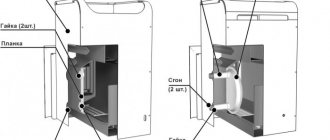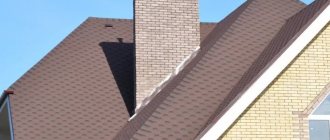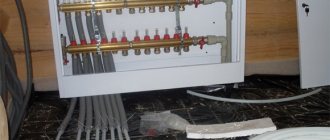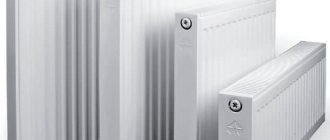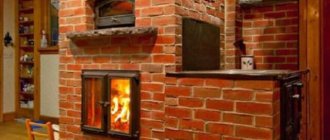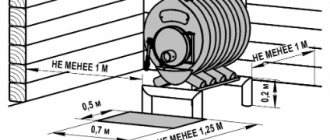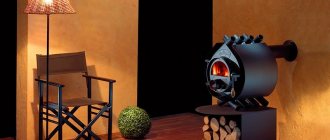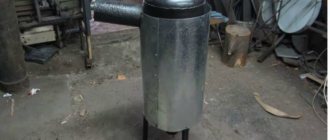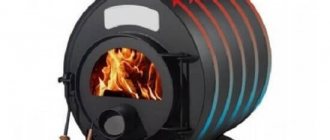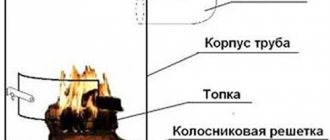- Cast iron
The functioning of stoves indoors or in a sauna directly depends on the installed chimney. From it, oxygen-saturated air is directed into the firebox, which is required to maintain stable combustion. The resulting smoke, soot and processed gases are removed from the room through a pipe. To regulate the combustion process and prevent heat loss, they resort to installing furnace rotary dampers for chimneys made of stainless steel and other materials.
Functions, purpose and characteristics
This special partition is a mandatory part of the channels responsible for the smoke exhaust. Its presence guarantees the safe operation of the installed stove or fireplace, as it ensures the fire resistance of the entire heating system in the room. It completely duplicates the cross-section and area of the chimney lumen. When closing, seasonality should be taken into account, since in winter it is allowed to retract the damper half its length, and open it completely in summer. Solid overlap is prohibited.
Its maneuverability makes it possible to increase or decrease the pipe cross-section, which increases or decreases the air supply after the stove is fired, respectively.
Externally, this damper looks like a small metal plate, which is adjusted using a handle located outside. This provides manual adjustment, allowing the owner to independently change the position of the partition. Regardless of the type of structure, it is mounted by placing it inside a pipe and then securing it with a clamp.
The chimney damper is responsible for several functions:
- Increases traction in adverse weather.
- Injects air that increases combustion power.
- Reduces draft in windy weather.
- Prevents heat leakage when heating the heater.
- Reduces combustion intensity, allowing you to save on fuel.
What is a gate valve
The German word Schieber in Russian has not changed either its pronunciation or meaning. If we talk specifically about stove heating, then a damper, as well as a damper, is a shut-off device that blocks the chimney channel.
When arranging a smoke exhaust duct, a valve is installed in the upper part of the base, which is located in the room, so that, if necessary, it is possible to manually regulate the movement of gases, and at the same time the quality of draft.
This is what the gate looks like when extended. When retracted (when the stove is already heated), the valve is almost invisible, only its “eye” protrudes outward.
A damper on the chimney duct is required for the traditional version of a brick stove. By retracting it partially or completely, you can reduce the draft or block the movement of heated gases.
The damper is fully retracted when the stove is heated and gases harmful to health stop flowing into the channel. There are known cases of deaths of people who were burned by a stove that was “closed” early.
If you are late in closing the damper, the heat from the heated bricks will go into the pipe, and the temperature in the room will quickly drop. A timely retracted damper is a guarantee that the house will be warm for at least a day. As you know, in village houses during the cold season the stove has to be lit every morning.
Factory-produced steel gate valve with a diameter of 200 mm. To simplify installation, it is sold together with a piece of steel pipe, built-in.
There is an opinion that dampers, which are mandatory for brick stoves, are absolutely not needed for steel stoves (although they are offered by manufacturers), as well as for models with an installed deflector.
The argument against their use is the fact that the chimney quickly becomes clogged with soot when the damper is closed. Its upper part is cooled by cold air entering the pipe, which, when in contact with a hot steel pipe, forms a large amount of condensate. This situation requires more frequent chimney cleaning.
How is traction adjusted?
Adjustment is the most important aspect of operating furnace equipment. With proper control of this process, you can achieve the highest efficiency from the device, as well as save the health of the residents of the house. Even if the partition is completely blocked, there is still a gap for the movement of exhaust gases. It must be closed exclusively in the final part of the firebox (after the wood has finished burning and an ash layer has formed on it). According to fire safety requirements, the damper must have a small hole through which weak gas exchange occurs.
Considering the importance of this element, it is necessary to choose trusted manufacturers. Such as the manufacturing company Ferrum.
Adjusting the temperature of a solid fuel boiler
The efficiency of a heating system depends on a uniform temperature supply. And if in gas and liquid fuel boilers this issue is resolved by continuous fuel supply, then in solid fuel boilers there is no such possibility. And the solid fuel itself, when burned, releases its temperature unevenly: at the beginning and end of combustion, the portions of firewood are smaller, in the middle of the process – more.
A system for regulating the intensity of fuel combustion, that is, the supply of air necessary for combustion, helps to partially solve this problem.
Thermostatic draft regulator
The boiler doors have seals, so air enters under the grates through the lower damper. The opening amount of this blower flap is controlled by a thermostatic draft regulator.
Thermostatic draft regulator. Photo from cotlix.com
The required temperature is set on it, and the regulator itself is mechanically (by a chain) connected to the blower door. If the temperature is insufficient, the regulator slightly opens the blower door; if it is too high, it closes it.
You need to understand that a solid fuel boiler is a very inert device, and the draft regulator controls the combustion process with a large error. Therefore, the entire heating system must be designed taking this feature into account.
Fan and controller
A smoother adjustment of the combustion process is possible using a fan that pumps a specified amount of air into the firebox. The number of revolutions of the device blades is regulated by a controller that takes into account the readings of the temperature sensor and the value of the temperature set by the user.
Shiber
A damper is a damper on a chimney, otherwise called a throttle. The damper is installed after the boiler and blocks the chimney channel. Whether it needs to be installed or not depends on the equipment model. Some types of boilers are equipped with a damper as standard; in other cases, manufacturers may recommend installing an additional damper in the chimney.
The damper allows you to increase the efficiency of the heating device by partially blocking the chimney and reducing the rate of removal of heated combustion products. How much to open or close the damper can only be determined experimentally, because it depends on the outside air temperature, humidity, atmospheric pressure, wind direction and strength.
Properly selected heating equipment, and most importantly, its effective use, will bring warmth into the house, and the owners will only need to supplement it with home comfort.
>
Types of valves for pipes
They come in two types: retractable and rotary. Based on the name, it becomes clear that their difference is the principle of operation. The first operates due to perpendicular movements of the partition relative to the chimney lumen. To increase traction, it moves back and completely leaves its boundaries, and to reduce the flow it will need to be pushed back. The second involves a rotating mechanism located inside the pipe.
Retractable
This type is considered a comfortable and effective method of traction control. Its main difference is its long service life, which is achieved due to the absence of temporary wear in the axial fastening areas. Due to this, it is possible to maintain the high quality and safety of the gate, even under unfavorable environmental conditions. But it is often possible to find ready-made additional structures for a metal skylight with an oval or rectangular hole.
Retractable type is also divided into:
- Simple - has the form of a rectangular groove mounted inside the passage. It contains a special plate responsible for opening the chimney.
- The unit is a ready-made unit, created as a retractable plate into which a pipe section is built. Its advantage is the ease of insertion, which significantly speeds up installation.
Rotary damper for chimney
The principle of its operation is based on the rotation of the partition around its axis. When turned counterclockwise at a right angle, the damper closes the air flow. If the turn is carried out in the opposite direction, then no obstacles are created in the path of the air. To regulate this process, you need to operate a special handle.
Purpose
To understand why a damper is needed in a chimney system, you need to study the scope of application of the device. It is used in pipeline systems where it acts as a shut-off valve. The gate serves as a flow limiter for liquids and bulk mixtures. From the scientific side, such a device is called “change-over”.
By installing a valve in a system that provides the ventilation process, the device is used as a regulator of air mass flow. By moving the damper horizontally, the amount of air consumption that overcomes the obstacle in the form of a structure changes. Thus, a partial or complete partition is created in the path of air flow. The device is called “regulating”.
In a chimney system, a damper device is installed as a control element, which ensures partial or complete blocking of the smoke channel. This reduces the heat loss generated inside the steam room after combustion. The damper provides regulation of the traction force, since it acts as a damper in the direction of smoke movement. As the cross-section of the chimney pipe decreases as a result of the damper moving deeper into the structure, the traction force decreases. When completely blocked, it stops completely. When the gate element completely opens the channel for the movement of smoke, the draft increases, the combustion process occurs better, and the room heats up faster.
Difference in models depending on material
Various materials can be used for the production of chimney valves: cast iron and steel. They have shown the most reliable performance characteristics, allowing them to be resistant to high temperatures.
Cast iron
Quite durable and long service life. Disadvantages:
- heavy weight, which increases the load on the structure;
- difficulties encountered during installation;
- in case of use in wet conditions - poor corrosion resistance.
Used in chimneys made of brick base.
Stainless steel
A device made from this material belongs to the universal category. Excellent for installation in stoves, fireplaces and chimneys made of brick (pre-lined with a stainless steel pipe) or metal.
Steel structures have a simpler appearance, but are not much inferior to cast iron in properties. Their significant advantage is their light weight, which reduces the load. In addition, they are mounted on all kinds of chimneys (rectangular and oval, heavy, made of brick, etc.). When choosing a damper for a furnace, you will need to take into account not only the operational properties, but also the overall interior of the room.
DIY chimney damper installation
You can install a damper for a fireplace or heating unit in one of three ways:
- The damper is installed directly in the fireplace insert. It is placed at a distance of 100 centimeters from the heating device, which makes it easy to control.
- Combining the damper with other elements of the heating structure without the use of additional fasteners. This installation method is called “pipe to pipe”.
- The damper is installed in ventilation pipes. It is used to prevent the fan motor from overheating during operation.
Installation must be carried out in the closed position of the gate to prevent excess load on the engine.
Since there are a variety of models of stove units and fireplaces and heating using them is carried out in different ways, each of them requires its own type of valve.
For example, for a stove operating on gas, you will need a classic rotary-type throttle valve or a rotary automatic damper, since they are capable of blocking the chimney pipe completely and then the flame will not be able to escape outside.
At the same time, rotary valves should not be installed when installing a sauna stove, since when closed they will allow steam to pass through, and in the open position they are very difficult to clean.
As a rule, a damper for a fireplace or stove unit is sold as a complete set along with a chimney. But there are smoke exhaust structures without a damper, so you can make one yourself by buying elements for it at a hardware store. The main thing to do before purchasing them is to decide on the required sizes.
It is better to buy valves made from stainless steel. The main part of the gate installation is the shell. The gate contains several shells.
Which material is stronger
In addition to structural differences, gate valves differ based on the material used at the manufacturing stage. The only available solution is stainless steel. This is due to the fact that it does not deform under the influence of high temperatures, and also retains its original appearance and characteristics even after several years of active use.
Valves in stainless steel gate valves from the manufacturer Ferrum are fixed using argon welding on a rod 8 millimeters long. The presence of a reinforced spring ensures the design's reliability and durability.
Tips for choosing a gate valve
It must be remembered that the correct selection of an element such as a slide damper is reflected in the future not only on the draft indicator, but also on the safety of the heating system, of which the chimney is a part. Installation of the damper is carried out on any model of fireplaces and stoves, except for the most modern ones, which have a deflector.
The main recommendations for choosing slide valves for smoke exhaust communications are as follows:
- If the heating device operates by processing gas, it is better to purchase a rotary valve model. This is due to the fact that such models exclude the possibility of completely blocking the smoke exhaust channel. Thus, the heating system will be safer. The chimney, which removes combustion products from the gas stove, must be closed by at least 40 percent during operation;
- There are heating systems that operate intermittently (periodic). A closed damper installed in such a heating structure, as a rule, allows steam to pass during supply, and an open damper contributes to the formation of a large amount of soot on the pipe, which is located below the plate;
- It is strictly not recommended to use rotating elements for installation in sauna chimneys.
A rotating device is the most suitable option for a gas-consuming system
Note! The chimney damper is a shaped part of the chimney service, so if you purchase everything necessary for laying a chimney, it will be included with the pipes. Such shutters can be purchased at any specialized store or ordered using an online store on the Internet.
Experts recommend carefully measuring the cross-section of the smoke exhaust duct before purchasing a gate product. Perhaps this is the main thing that needs to be done before purchasing a gate.
How does the installation work?
The rotary damper for the chimney is installed as follows. The height of the product is determined by the craftsman based on the actual structure of the furnace. The minimum height is 0.9-1 meters from the floor, and the maximum is approximately 2 meters. As a rule, installation does not take more time and proceeds in several successive stages:
- Selecting the installation location and setting marks on the bricks that need to be trimmed.
- Cutting bricks using a grinder.
- Fixing the chimney partition with masonry mortar.
- Brickwork according to a row pattern.
Mounting the gate
If the chimney is made of brick, then installation work should be carried out no closer than 1 meter from the stove. To do this, the chimney must first be lined with a stainless steel chimney. This is the only way to avoid structural damage due to condensation and excessive soot deposited on the walls.
Since it is very difficult to make a gate valve for a chimney in a round pipe with your own hands, purchase rotary gate valves from trusted manufacturers who guarantee the quality and durability of their products.
Only a qualified specialist can correctly calculate the dimensions of all parts and select the best option for the chimney. The installation process itself, carried out by specialists, includes:
- Chimney laying carried out by a specialist (first 7-9 rows).
- Coating the top layer of bricks with a small amount of laying mortar.
- Frame placement.
- Applying the working solution for fixation.
- Continuation of masonry according to the previously described scheme.
The final step is to seal the existing cracks. This is a necessary measure, the implementation of which allows not to disturb the traction force and prevent carbon monoxide from penetrating inside.
Installation in a brick pipe
The process is practically no different from the standard assembly of a finished kit. If installation work is carried out by a professional on a brick pipe, then the steps will be as follows:
- Laying down to the last layer of brick.
- Forming a pillow from clay, which cools slightly until it is soft and can be fixed.
- Laying the gate, accompanied by the application of slight pressure to place it in the clay mass.
- Re-placement of clay on the top layer and formation of a new brick row,
- Wait for it to dry and check the operation of the installation (if necessary, you can remove excess clay).
- Covering the resulting cracks.
If the pipe has already been installed, the technician will need to further disassemble it and only then proceed with the steps described above.
Knowing how to make a damper valve in a steel chimney pipe will allow you to entrust all the work to a specialist and not waste unnecessary nerves. And studying and becoming familiar with the main technologies, nuances and features of this process guarantees a high-quality installation check, ensuring the uninterrupted functioning of the smoke damper and the safe stay of people in a bathhouse or private house.
Principle of use
In order to reduce the draft, you need to close the damper a little. If, on the contrary, you want to increase traction, you need to open the gate. The principle of use is extremely simple.
The main thing is to choose the right device for your stove and learn how to use it (even though it is very simple). An important nuance is that when the furnace is idle for a long time, you must keep the damper closed to avoid foreign elements getting in there.
The damper also separates the insulated part of the chimney from the non-insulated part. The gate is usually installed at the beginning of the pipe. At the end where the pipes are well insulated, installing a valve is not recommended.
What functions of the damper have we derived?
- With its help, traction is adjusted.
- It protects the chimney from temperature changes.
